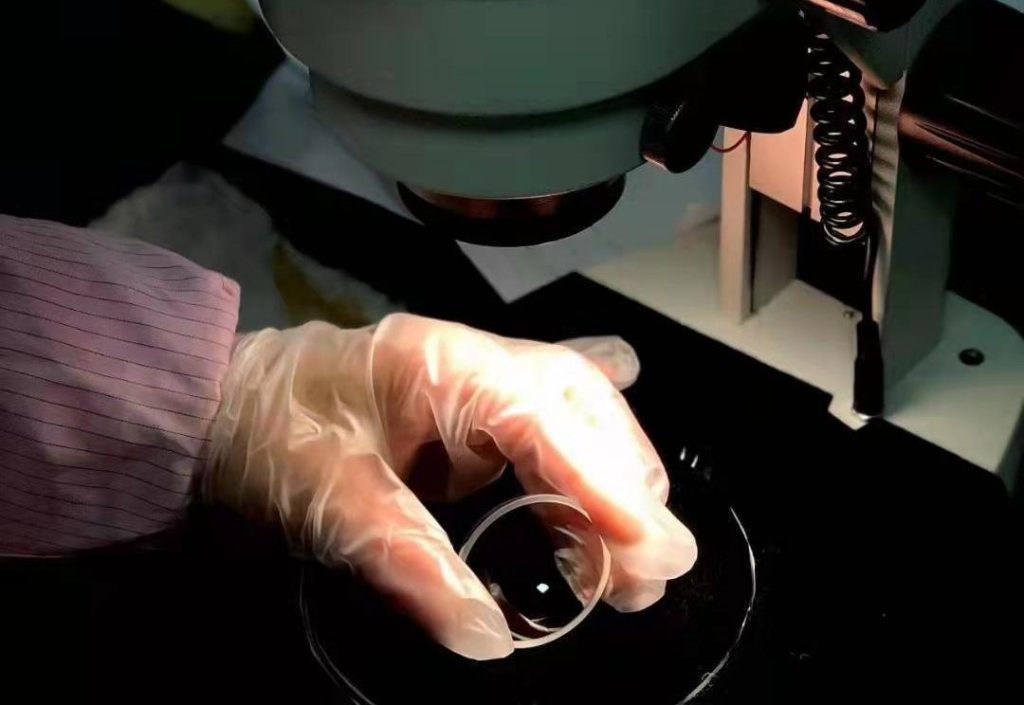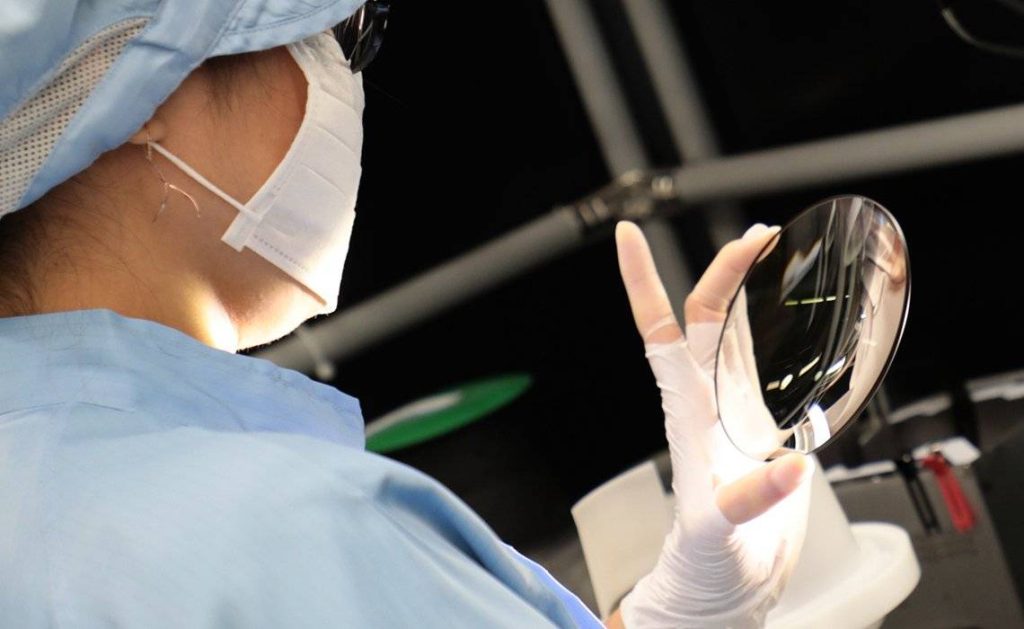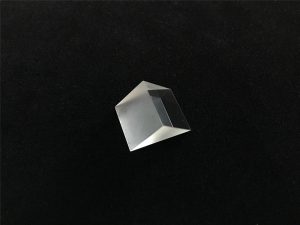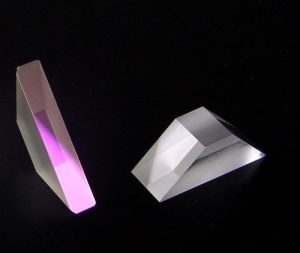No matter the glasses made of inorganic or organic materials, in daily use, the friction with dust or gravel (silicon oxide) will cause lens wear and scratch on the lens surface. Compared with glass, The hardness made of organic materials is relatively low, which is more likely to produce scratches. Through the microscope, we can observe that the scratches on the surface of the lens are mainly divided into two types. First, the scratches caused by gravel are shallow and small, which are difficult for the wearer to detect; The other is the scratch caused by large gravel, which is deep and rough around. If it is in the central area, it will affect vision.

(1) Technical characteristics
First generation anti-wear film technology
The anti-wear film began in the early 1970s. At that time, it was considered that the glass lens was not easy to grind because of its high hardness, while the organic lens was too soft and easy to wear. Therefore, quartz material is plated on the surface of organic lens under vacuum to form a very hard anti-wear film. However, due to the mismatch between its thermal expansion coefficient and the sheet base material, it is easy to remove the film and embrittlement of the film, so the anti-wear effect is not ideal.
Second generation anti-wear film technology
After the 1980s, researchers found theoretically that the wear mechanism is not only related to hardness, but also has the dual characteristics of “hardness / deformation”, that is, some materials have high hardness but small deformation, while some materials have low hardness but large deformation. The second generation of anti-wear film technology is to coat the surface of organic lens with a material with high hardness and not easy to crack by immersion process.
Third generation anti-wear film technology
The third generation of anti-wear film technology was developed after the 1990s, mainly to solve the problem of wear resistance of organic lenses coated with antireflection film. Due to the great difference between the hardness of the organic lens substrate and the hardness of the antireflection film, the new theory believes that there needs to be an anti-wear film between the two, so that the lens can play a buffer role when rubbed by gravel and is not easy to produce scratches. The hardness of the third generation anti-wear film material is between the hardness of antireflection film and lens base, and its friction coefficient is low and not easy to crack.
Fourth generation anti-wear film technology
The fourth generation of anti-wear film technology uses silicon atoms. For example, the Titus hardening solution of France Yishilu company contains both organic matrix and inorganic ultrafine particles including silicon, so that the anti-wear film has toughness and improves the hardness at the same time. The most important technology of modern anti-wear film plating is the immersion method, that is, after multiple cleaning, the lens is immersed in the hardening solution and lifted at a certain speed after a certain time. This speed is related to the viscosity of the hardening fluid and plays a decisive role in the thickness of the anti-wear film. After lifting, polymerize in an oven at about 100 ° C for 4-5 hours, and the coating thickness is about 3-5 microns.
(2) Test method
The most fundamental way to judge and test the wear resistance of anti-wear film is clinical use. Let the wearer wear it for a period of time, and then observe and compare the wear of the lens with a microscope. Of course, this is usually the method adopted before the formal promotion of this new technology. At present, the more rapid and intuitive test methods we commonly use are:
Sanding test
Place the lens in the promotional material containing gravel (specify the particle size and hardness of gravel) and rub it back and forth under certain control. After that, measure the light diffuse reflection before and after the lens friction with a Hazemeter, and compare it with the standard lens.
Steel velvet test
Use a specified steel wool to rub on the lens surface for a hundredth of times under a certain pressure and speed, and then use the Hazemeter to test the light diffuse reflection before and after the lens friction, and compare it with the standard lens. Of course, we can also operate manually, rub the two lenses with the same pressure for the same number of times, and then observe and compare with the naked eye.
The results of the above two test methods are close to the clinical results of long-term wearers.
Relationship between antireflection film and anti-wear film
The antireflection film on the lens surface is a very thin inorganic metal oxide material (thickness less than 1 micron), hard and brittle. When plated on the glass lens, the film layer is relatively not easy to scratch because the film base is relatively hard and the gravel scratches on it; However, when the antireflection film is plated on the organic lens, due to the soft film base, the sand and gravel scratch on the film layer, and the film layer is easy to produce scratches.
Therefore, organic lenses must be coated with anti-wear film before antireflection film, and the hardness of the two films must match.

What are the advantages of lens coating?
The coated lens can reduce the reflected light on the surface of the lens, see the object clearly, reduce the specular reflected light, increase the light transmittance, solve the problem of photographing under strong light with glasses, and increase the aesthetic feeling. Coated glasses can prevent the damage of ultraviolet, infrared and X-ray to vision. Wearing coated glasses is not easy to fatigue. The vision of workers in front of the fluorescent screen can be protected.



